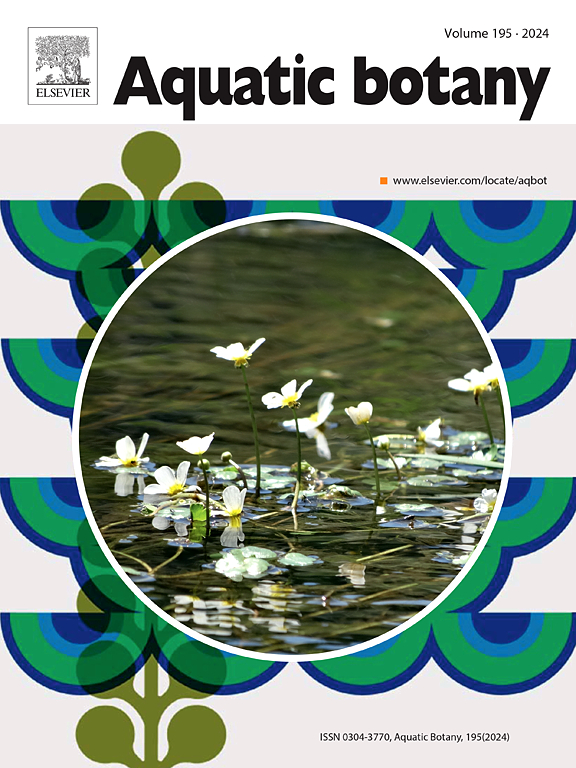Rhodolith beds in the Eastern Tropical Pacific: Habitat structure and associated biodiversity
IF 2.6
4区 生物学
Q2 MARINE & FRESHWATER BIOLOGY
引用次数: 0
Abstract
Rhodolith beds (RBs) are globally distributed marine benthic habitats and recognized biodiversity hotspots of conservation interest. However, considerable regions of the world’s oceans remain unknown in terms of the presence, distribution, structure, and associated biodiversity of such habitats. In the Eastern Tropical Pacific (ETP), even basic information about these habitats is still extremely scarce. To fill this gap, we characterized the habitat structure and associated biodiversity of four shallow-water RBs at Cocos Island, Costa Rica. Specifically, information regarding rhodolith structural attributes (size, morphology, and CaCO3 content), as well as habitat characteristics (rhodolith nodule density, biomass and CaCO3 standing stocks) were collected. Moreover, the diversity and abundance of associated organisms, including macroalgae, invertebrates and fishes, were determined. Our study shows that Cocos Island harbors dense RBs (1100 to >4500 nodules m−2) with substantial carbonate stocks (14–22 kg m−2), which provide habitats for a wide array of species (158 recorded species). This study adds 58 new records of RB-associated species to previously published records for the island, which increases the total number of species to 316, including 51 species endemic to the ETP and four species categorized as vulnerable by the IUCN. Our results also indicate that community composition and abundance of organisms vary among RBs, likely due to differences in rhodolith morphologies and sizes and/or local environmental conditions. Further research efforts are warranted to identify the drivers for these differences, as well as expanding studies towards other RBs at Cocos Island and in the ETP in general.
东热带太平洋Rhodolith床:生境结构及相关生物多样性
Rhodolith beds (RBs)是全球分布的海洋底栖生物栖息地,也是公认的生物多样性保护热点。然而,就这种栖息地的存在、分布、结构和相关的生物多样性而言,世界海洋的相当大区域仍然是未知的。在东热带太平洋(ETP),即使是关于这些栖息地的基本信息仍然非常稀缺。为了填补这一空白,我们对哥斯达黎加Cocos岛4种浅水RBs的栖息地结构和相关生物多样性进行了表征。具体而言,收集了有关rhodolith结构属性(大小,形态和CaCO3含量)以及栖息地特征(rhodolith结节密度,生物量和CaCO3常绿储量)的信息。此外,还确定了相关生物的多样性和丰度,包括大型藻类,无脊椎动物和鱼类。我们的研究表明,Cocos岛拥有密集的RBs(1100至>;4500结核m−2)和大量的碳酸盐储量(14-22 kg m−2),为各种物种(158种记录物种)提供了栖息地。本次研究为该岛屿新增了58个与rb相关的物种记录,使物种总数增加到316个,其中包括51个ETP特有物种和4个被IUCN列为易危物种。我们的研究结果还表明,由于rhodolith的形态和大小以及/或当地环境条件的差异,不同的RBs之间的群落组成和丰度存在差异。进一步的研究工作需要确定这些差异的驱动因素,并将研究扩展到Cocos岛和ETP的其他苏格兰皇家银行。
本文章由计算机程序翻译,如有差异,请以英文原文为准。
求助全文
约1分钟内获得全文
求助全文
来源期刊

Aquatic Botany
生物-海洋与淡水生物学
CiteScore
3.80
自引率
5.60%
发文量
70
审稿时长
6 months
期刊介绍:
Aquatic Botany offers a platform for papers relevant to a broad international readership on fundamental and applied aspects of marine and freshwater macroscopic plants in a context of ecology or environmental biology. This includes molecular, biochemical and physiological aspects of macroscopic aquatic plants as well as the classification, structure, function, dynamics and ecological interactions in plant-dominated aquatic communities and ecosystems. It is an outlet for papers dealing with research on the consequences of disturbance and stressors (e.g. environmental fluctuations and climate change, pollution, grazing and pathogens), use and management of aquatic plants (plant production and decomposition, commercial harvest, plant control) and the conservation of aquatic plant communities (breeding, transplantation and restoration). Specialized publications on certain rare taxa or papers on aquatic macroscopic plants from under-represented regions in the world can also find their place, subject to editor evaluation. Studies on fungi or microalgae will remain outside the scope of Aquatic Botany.
 求助内容:
求助内容: 应助结果提醒方式:
应助结果提醒方式:


